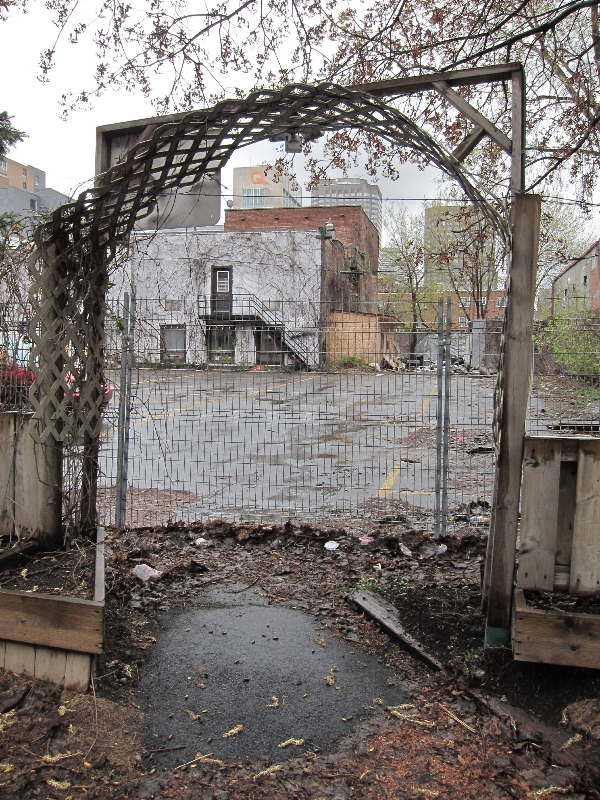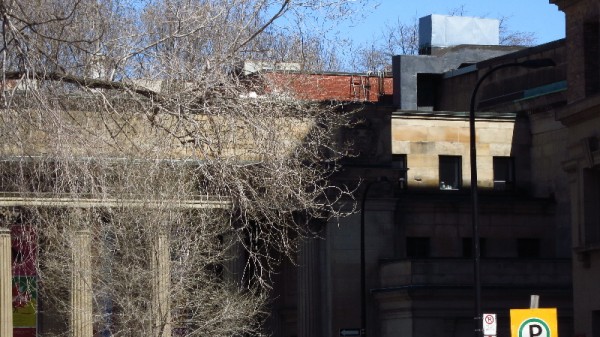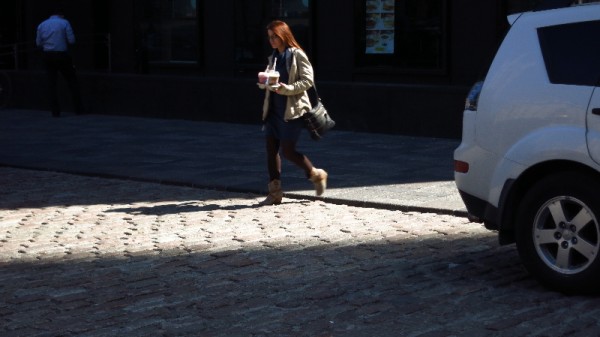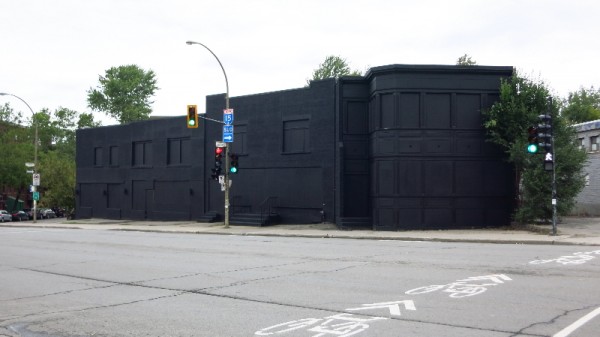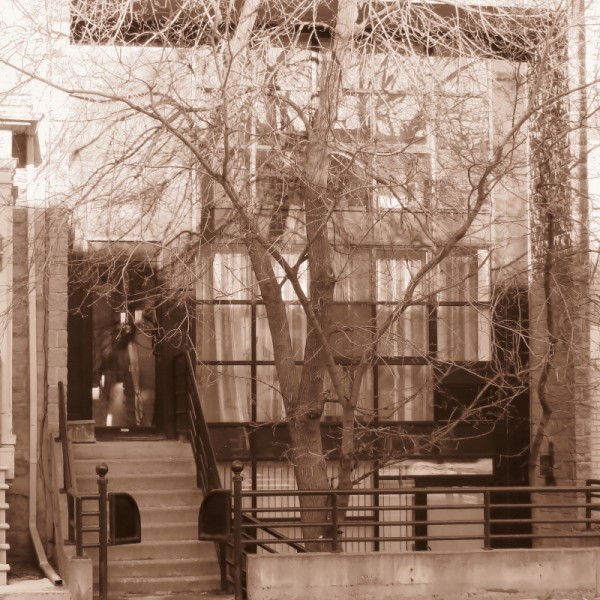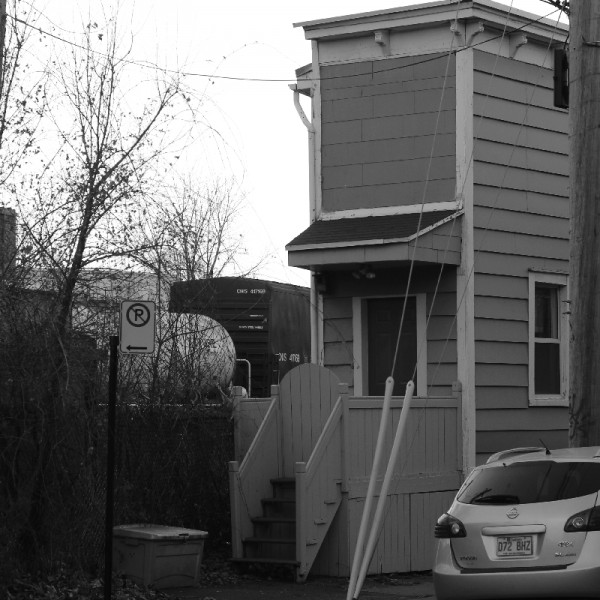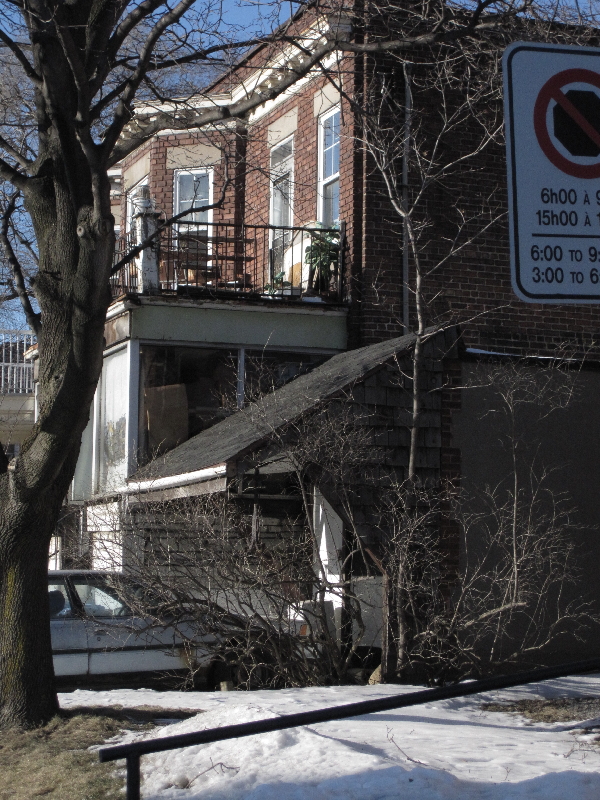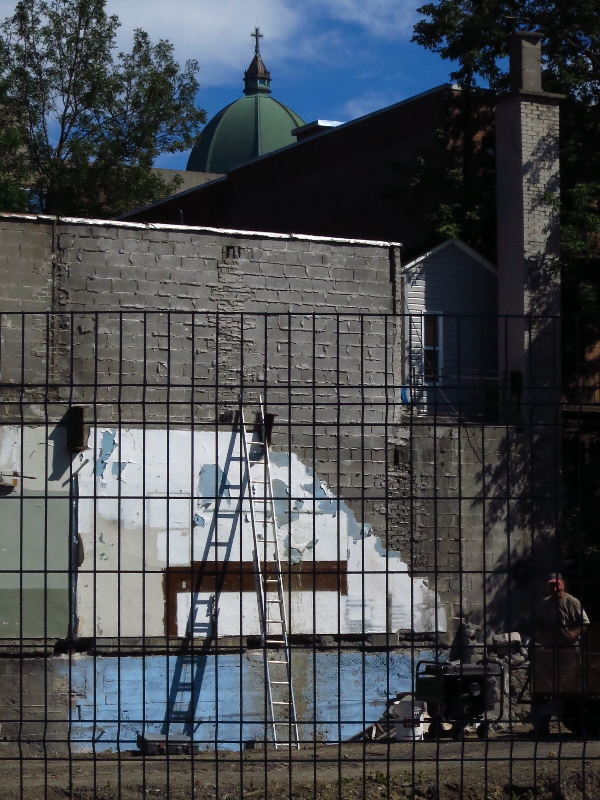As time goes by…
Places seem to be ordinarily stable with their setting, occupants, users and activities … and then, for various reasons over time, are modified, abandoned, torn down, replaced, or transformed to accommodate old or new occupants’ needs and activities … As time goes by!
The present post, an interlude, intends to be a photographic salute to the traces of the passage of time in the city, with short descriptions of each situation under the heading: ATGB. All photos have been culled eclectically from my personal “Foto Files” across various pertinent topics.
ATGB: A near-downtown parking lot left to go pathetically to seed while waiting to be redeveloped as a condominium complex, pathetic because I remember when that arbour was first set up to mark a pedestrian entrance. (MSA Foto File – Peopled places)
ATGB: 19th century Montreal Stock Exchange Building turned into The Centaur Theatre. Corinthian columns, same stone exterior with new interior spaces and roof top equipment.(MSA Foto File – Photo safari Mili)
ATGB: Original bloc pavers brought back for ambiance, and to slow car traffic in some areas of Old Montreal, here at Place d’Armes, its epicentre. (MSA Foto File – Photo safari Mili
ATGB: Roof and walls restoration of the original 17th century Montreal Seminary Building, inserted between the post- fire rebuilt Notre Dame Basilica complex and a 19th century mixed occupancy building. (MSA Foto File – Roofs)
ATGB: 19th century residential into 20th century commercial bay window treatment … in the “aluminium-isation” of old stone architecture (MSA Foto File – Shopfront serie B+C)
ATGB: Obit for a Dead building … the coolest way, not to say the coldest, to announce the impending replacement of a small commercial complex into, you guessed, condominiums. Interestingly the blackened façade was not tagged during the interim period … something about a shrouded building that calls for respect. (MSA Foto File – Silencio)
ATGB: 19th century stone townhouse “reinterpreted” into 20th century aluminium and glass, on its original foot print and among its original neighbours…welcome to Montreal Mr Mondrian (MSA Foto File – Square dance)
ATGB: 19th century industrial worker house into a 20th century YUPI house … cheek by jowl to fully functioning train tracks. (MSA Foto File – Walking Montreal)
ATGB: A “barnacled” house, as front porch became enclosed and adjacent older structure was annexed into workshop … unmistakable expression of “lived-in architecture”… over time. (MSA Foto File – Pleasure Places)
Synthesis
ATGB: Traces of a demolished old mixed occupancy building, exposing cut up floor structure and layers of wall finish embedded on party wall, under the benign presence of Montreal Oratory Church in background. (MSA Foto File – Peopled places)
I have used the feature image in this synthesis to illustrate the fact that a city is a physical evolving phenomenon, the spatial expression of an evolving human phenomenon: ritual-structured, change-paced and space modulated-and-mediated urban life.
As all the examples presented indicate, change seems to be an adaptive mechanism of urban life and urban design: when residences and institutions are gradually changed or radically transformed, or when parking lot and commercial buildings connoted by speculation and greed will be coldly abandoned, torn down and built over… but sometimes change will meet resistance such as when the worker house and seminary building have been deemed part of “sacred” architectural patrimony and kept more or less intact.
Cityscape and Time
If physical change, as material trace of passing time in the city, can help read the city historically, it certainly helps also to read the changing spatial distribution of social groups, as well as to measure the passing of one’s own personal time, in a very concrete way:
- “I remember when there was a …. here”
- “Them? Oh yes they have moved to ….”
Sometimes a public plaque will provide that type of information where the building no longer stands or where a resident was noteworthy enough to be remembered … and history books are written of course to put it all in context.
As Kevin Lynch wrote in his WHAT TIME IS THIS PLACE?
“We prefer a world that can be modified progressively, against a background of valued remains, a world in which one can leave a personal mark alongside the mark of history.” p.39
I will refer to the book, and to other sources, as I set to explore in coming posts the physical and social dimensions of my city’s many temporalities.
All photos credit Maurice Amiel
“As time goes by” refers of course to the CASABLANCA love song, and to its lyrics, for what they say about what may change and what simply is too fundamental to do so.
Bibliography: Lynch, Kevin – WHAT TIME IS THIS PLACE?, M.I.T Press, Boston, 1973

